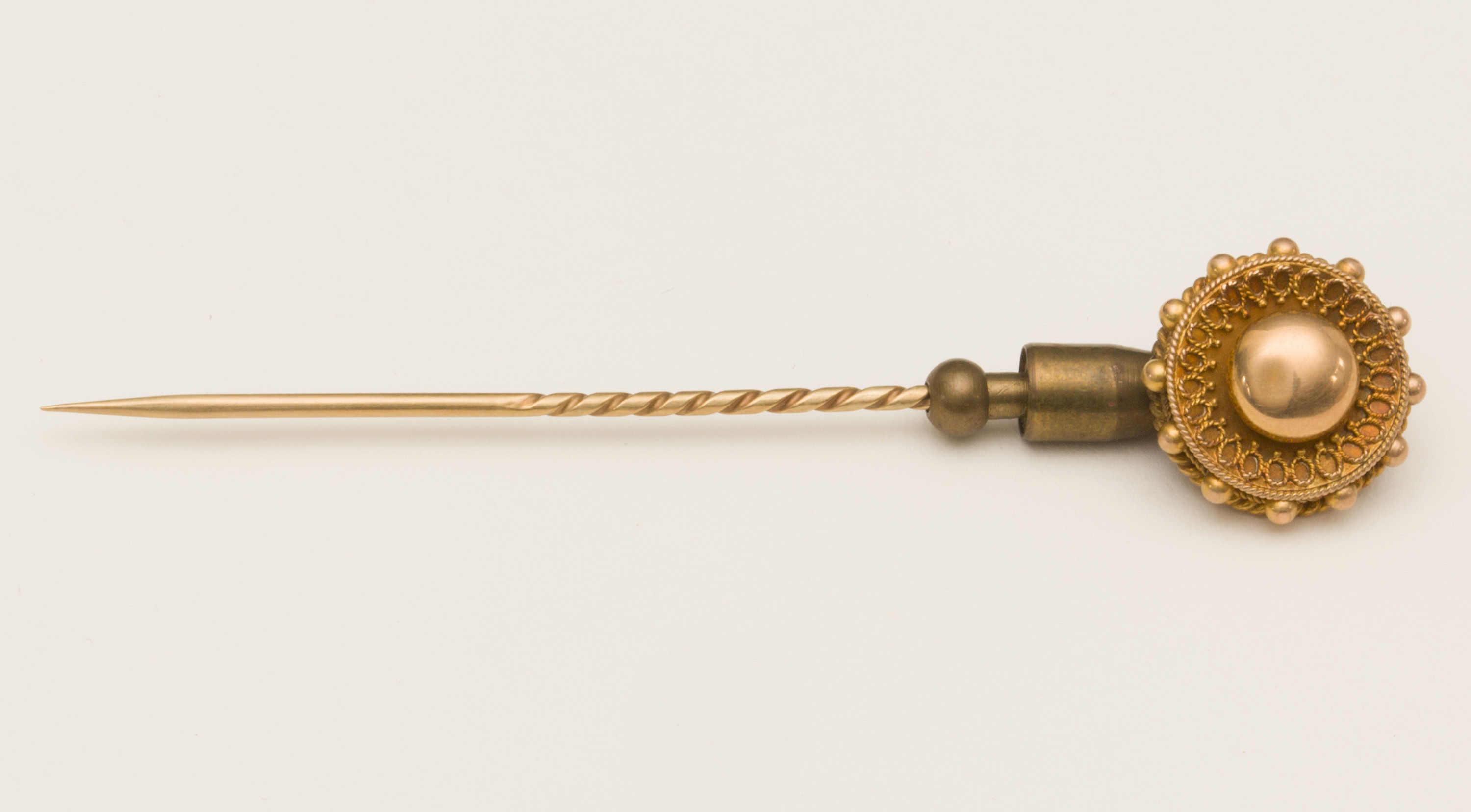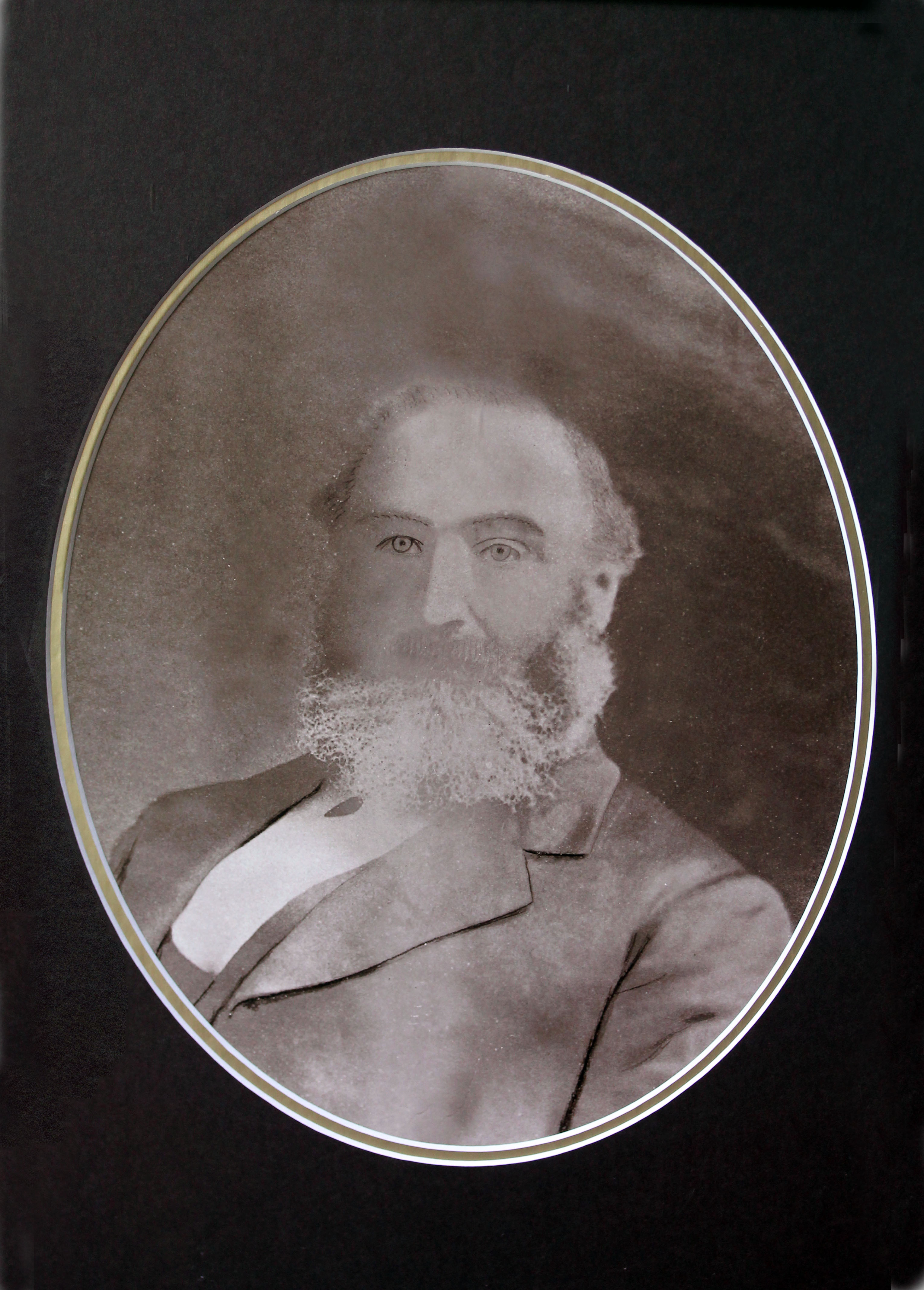The sphere on this tie pin is made from some of the first gold to arrive in Canterbury from the newly discovered goldfield on Te Tai o Poutini (the West Coast). It was carried overland in 1864, 6 months before the gold rush began.

At that time the West Coast south of the Mawhera (Grey) River was part of the province of Canterbury and was known as West Canterbury. From 1862, small amounts of gold had been found there by Māori and itinerant prospectors, who numbered around 200, but nothing that would support a large population.
In mid-1863, the Canterbury Provincial Government set up a depot at Mawhera for surveyors working in the area. When Canterbury’s agent, Charles Townsend, drowned in October 1863 he was replaced by Kaiapoi man and former police officer William Horton Revell.

Revell arrived at Mawhera in January 1864 and promptly purchased 56 g of gold from Andrew Hughes. Hughes had been prospecting at Hohonu Creek, a tributary of Taramakau River. Hohonu Creek was increasingly the focus for gold seekers. In January 1864, Haimona Tuakau and Samuel Te Aika found gold under a large greenstone boulder in the creek which is now also known as Greenstone Creek. By early July 1864, Werita Tainui and whanau (family) had secured 50 ounces (1.4 kg) of gold and prospector Albert Hunt at least 15 ounces (425 g).

A week later Revell walked over the Southern Alps to Christchurch to report that a payable goldfield had been found. He brought gold with him including the metal made into the centrepiece on this tie pin.
After Revell arrived on 28 July 1864 with his news, the Lyttelton Times echoed the sentiments of many with a lament about a goldfield being “forced upon Canterbury”. Despite the distinct lack of enthusiasm for a gold rush, a rush was unstoppable.
The Canterbury Provincial Government finally proclaimed West Canterbury a goldfield in March 1865. By that time the population of Westland had already increased to 5,000. By 1867, the population of the West Coast had jumped to more than 30,000, about 10% of New Zealand’s population at the time.
Since the first finds of payable gold in 1864, more than 170 tonnes of gold have been found on the West Coast. This tie pin is a poignant link to the hardy prospectors who successfully searched for a payable goldfield.
The pin was donated by R I Sutherland of Avonhead, Christchurch in 1987 with details of its history. Further information about the donor would be very welcome. Please email info@canterburymuseum.com if you have any leads.





